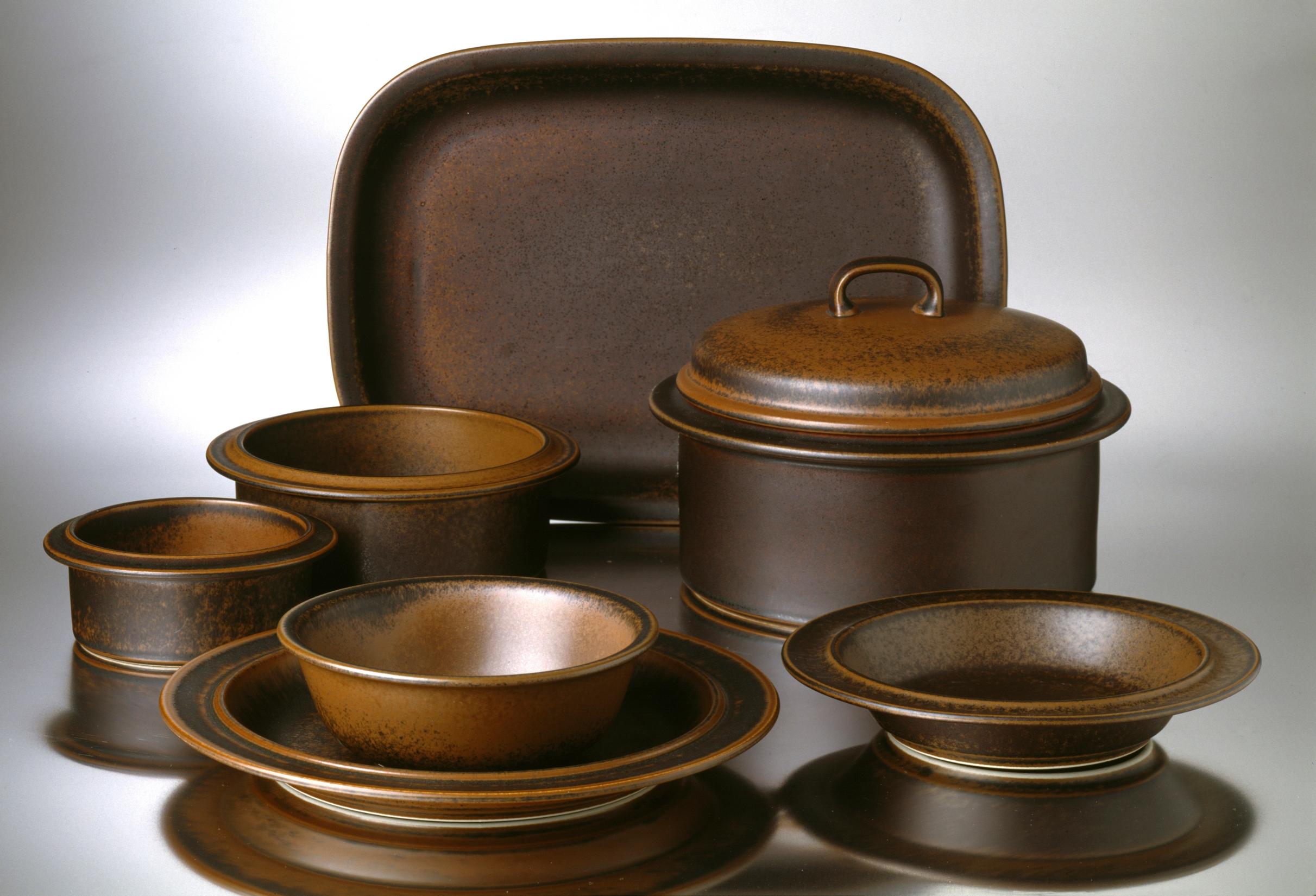
Finnish retro favorite's earthy style and humility make the Arabia Ruska dishware set relevant once again
Arabia’s earthy Ruska dishware set charmed many Finns with its simplicity during the 1960s. Its multi-purpose pieces were also popular in summer cottages. A few decades later, the set is back in style.
The first thing you notice about Ruska dishware is its weight. Fill a Ruska teacup with hot tea, and you might need both hands to lift it.
Another hallmark of Ruska is the screeching sound when a metal knife or teaspoon brushes its surface. The matte glaze is the reason, giving the pieces a lively, handcrafted look. Introduced in 1961, the Ruska series was the first tableware by Arabia to feature that finish.
Arabia’s in-house designer Ulla Procopé (1921–1968) created the series’ first pieces in 1960. That same year, they were featured at the international design exhibition Triennale di Milano, where they drew significant interest.
Production began promptly at the start of the next year. The first ten items to go on sale included plates in various sizes, serving platters, and dishes suitable for cooking.
Sales were promising, and the Danish sales office eagerly requested more. The designer was asked to keep going. Next, Ulla Procopé created a sugar bowl, a creamer, and a teapot. The collection kept expanding through the 1960s and ’70s, eventually comprising about forty pieces.
By the time she created the series, Ulla Procopé was already an experienced designer. She joined Arabia in 1948 and worked in its serial production design team, which was led by the legendary designer Kaj Franck.
Procopé studied ceramics at the former Central School of Arts and Design in Finland. While studying, she became interested in functional pieces and the traditional ceramics technique of wheel-throwing.
This talented designer was recruited by Arabia immediately after completing her education. For the first three years, she worked in the art department, where objects were produced in small batches. When she fell ill with silicosis, an occupational disease affecting ceramics workers, she had to shift to working at a drawing table.
Her love for the potter’s wheel showed in her designs, which featured the soft, rounded shapes typical of handcrafted work, as seen in the popular Liekki pots (1957), Tutti Frutti and Pomona jars (1959 and 1962), and the beautifully hand-decorated Valencia dishware (1960).
She was forced to stop working at 45 due to her worsening illness. After a few years of retirement, she passed away at just 47 in 1968. She never saw the success of her Ruska dishware. The Ruska series remained in production until the late 1990s, while Valencia continued into the early 2000s.


The Ruska series reached its height of popularity in the 1970s, as its earthy, handmade look perfectly matched the spirit of the time. People also liked that Ruska pieces worked for cooking, dining, and serving, making them especially convenient for summer cottages.
Ruska lost some of its shine in the 1980s, when lighter and more colorful dishware became popular. By the 2000s, you’d mostly spot Ruska on thrift store shelves for just a few euros. But in recent years, interest in the series has returned. Many of today’s new products feature a similarly tactile surface and a boldly simple style reminiscent of Ruska.


